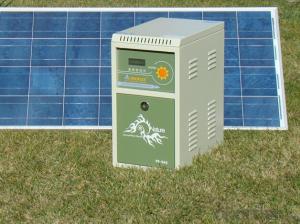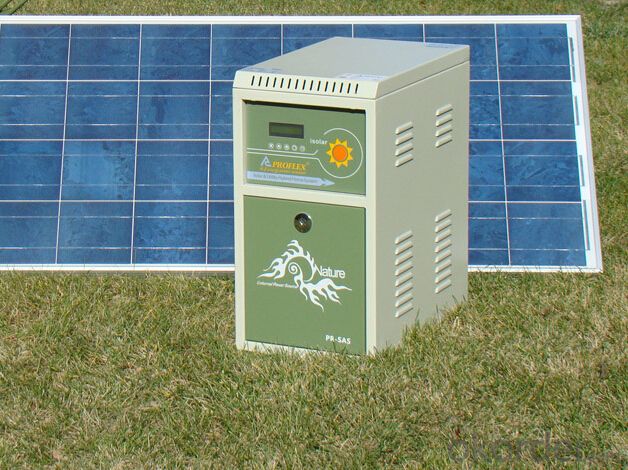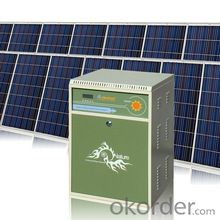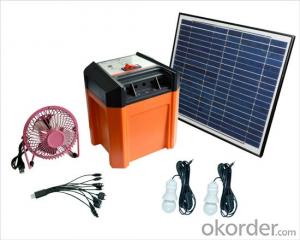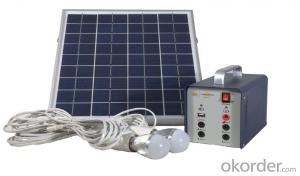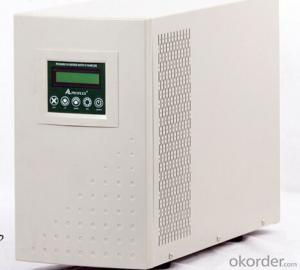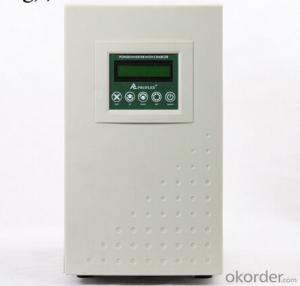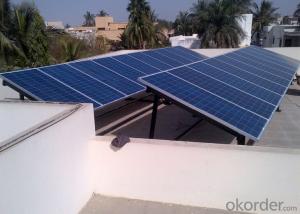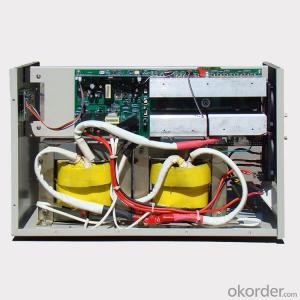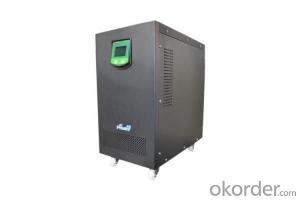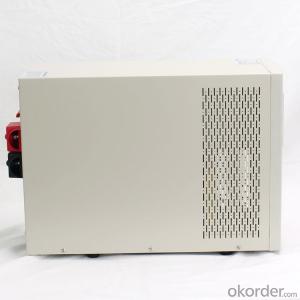Building Solar Energy Systems - Off Grid Solar Power System PR-SAS300A with Battery Tank 300W
- Loading Port:
- Tianjin
- Payment Terms:
- TT OR LC
- Min Order Qty:
- 10 pc
- Supply Capability:
- 10000 pc/month
OKorder Service Pledge
OKorder Financial Service
You Might Also Like
Specification
Specifications
1.Supply 2 work modes: to save electricity bill or to supply long time power backup.
2. Supply battery tank,high integrated.
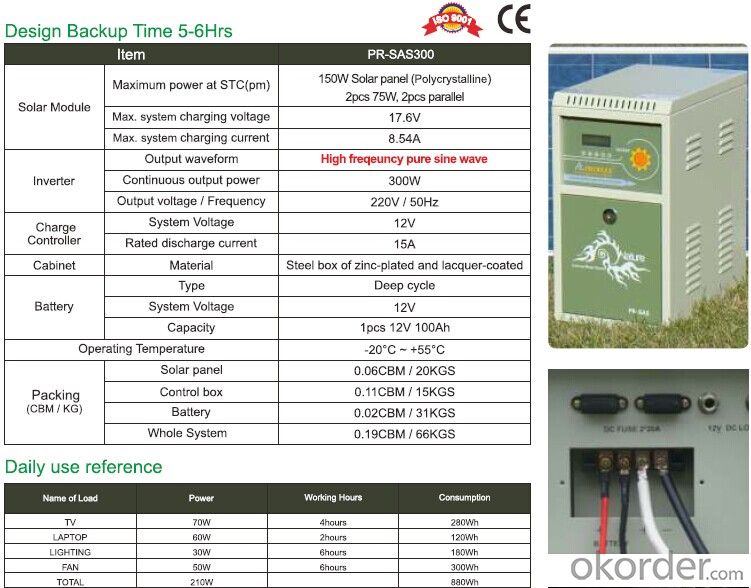

Daily use reference
TV 70W x 4 hours
Lighting 30W x 6 hours
Fan 50W x 6 hours
Laptop 60W x 2 hours
Total loading power: 210W
Total power consumption per day: 880Wh (0.88kWh/day)
AC solar power system consists of solar batteries, solar controller, battery, inverter components.
Used to solve rural or remote areas without electricity, such as highland, island, pastoral, villas, border posts and other military and civilian life electricity.
Warranty
CNBM Solar panel provides one of the most comprehensive module warranties in the industry:
· 10 years for product defects in materials and workmanship
· First 12 years for 90% of warranted minimum power
· Remaining 25 years for 80% of warranted minimum power
Certification
CNBM Solar panel strictly carries out the ISO 9001 quality control methodology and has implemented check points at every step of the production process to ensure our product performance durability and safety. The stringent quality control process has been confirmed by numerous independent agencies and LDK Solar modules earned IEC, TUV and UL certifications.
· IEC:IEC 61215, IEC 61730 (1&2), conformity to CE
· UL 1703 2002/03/15 Ed:3 Rev:2004/06/30
· ULC/ORD-C1703-01 Second Edition 2001/01/01
· UL and Canadian Standard for Safety Flat-Plate
· ISO 9001: 2008 Quality Management Systems
· CEC Listed: Modules are eligible for California Rebates
· PV Cycle: Voluntary module take back and recycling program
· MCS Certificate
FAQ
l Where can I buy your products?
You could find our products from dealers or contact our sales team directly. We will provide you with detailed services.
l How to contact us?
Contact details can be found from website www.okorder.com to contact us. We look forward to providing you with professional services.
l What is the application field of your products?
They can be used in the small photovoltaic (PV) grid power generation systems of family units as well as the commercial photovoltaic system such as BIPV, BAPV and etc.
l What kinds of modules do your inventers support?
Our inventers support most of mainstream components and modules in the market. Should you require more details, please do not hesitate to contact our technical personnel.

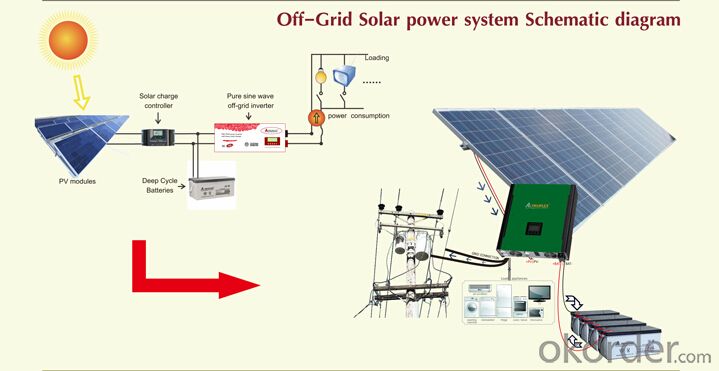
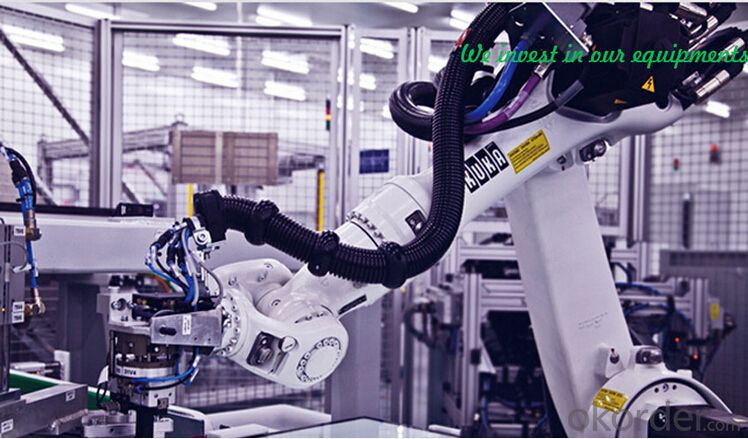
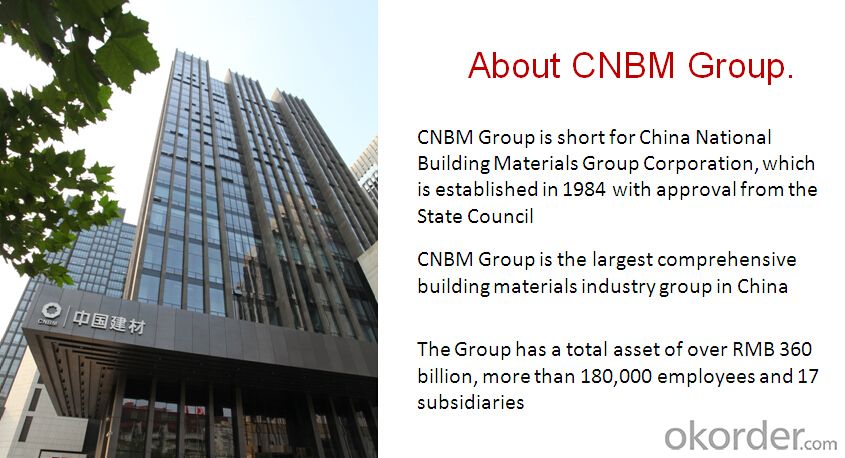

- Q: What is the lifespan of solar energy inverters?
- Solar energy inverters can have varying lifespans due to factors such as the inverter's quality, usage, and maintenance. Generally, a solar energy inverter that is of high quality and properly maintained can last approximately 10 to 15 years. However, thanks to technological advancements and enhanced durability, certain inverters can endure for 20 years or even more. It is crucial to bear in mind that regular maintenance, including thorough cleaning and inspection, can assist in prolonging the inverter's lifespan. Furthermore, selecting a reputable brand and ensuring correct installation can also contribute to an extended lifespan for solar energy inverters.
- Q: How does solar energy compare to other renewable energy sources like wind or hydro power?
- Solar energy, like wind and hydro power, is a crucial renewable energy source. However, it has its own unique advantages and disadvantages when compared to other renewables. Solar energy is abundant, easily accessible, and can be harnessed almost anywhere. While wind power may have the potential to generate more electricity, solar energy is more consistent and reliable. Similarly, hydro power is more efficient in terms of energy production, but it is limited by geographical constraints. Ultimately, the choice between these renewable sources depends on specific circumstances, such as location, available resources, and energy demands.
- Q: How does the efficiency of solar panels vary across different temperatures?
- Solar panel efficiency can vary depending on temperature due to the materials used in their construction. Typically, as temperature rises, the efficiency of solar panels decreases. This phenomenon is known as the temperature coefficient. The temperature coefficient measures how much a solar panel's efficiency decreases with every degree Celsius increase in temperature. Manufacturers provide different temperature coefficients for various types of solar panels. One of the main reasons for reduced efficiency at higher temperatures is the impact on semiconducting materials, like silicon, used in solar panels. These materials are sensitive to temperature changes and can experience increased resistance, resulting in less electricity generation from sunlight. Another factor affecting efficiency at higher temperatures is the decrease in open-circuit voltage, which is the maximum voltage obtained from a solar panel when no load is connected. As temperature rises, open-circuit voltage tends to decrease, affecting overall efficiency. It's important to note that the decrease in efficiency is not necessarily linear. At extremely high temperatures, the decrease may be more significant, while at moderately high temperatures, it may be relatively small. Manufacturers employ various design features to mitigate the impact of temperature on solar panel efficiency. These include using materials with lower temperature coefficients, incorporating cooling mechanisms like heat sinks or ventilation, and utilizing tracking systems to maximize sunlight exposure while minimizing temperature effects. In conclusion, while solar panels still generate electricity effectively at higher temperatures, it is crucial to consider the temperature coefficient and design features for optimal efficiency and performance.
- Q: Can a solar energy system be installed on any type of roof?
- Yes, a solar energy system can be installed on any type of roof. Whether it is a flat roof, sloped roof, metal roof, shingle roof, or even a tile roof, there are solar installation options available for each type. However, the installation process may vary depending on the roof type. For example, flat roofs may require mounting systems that tilt the solar panels to optimize their exposure to the sun, while sloped roofs may require adjustable racking systems to ensure proper alignment. Additionally, the condition and structural integrity of the roof should be assessed before installation to ensure it can support the weight of the solar panels. Overall, while the specific installation methods may vary, solar energy systems can indeed be installed on any type of roof.
- Q: Can solar energy systems be used for powering off-grid eco-tourism destinations?
- Yes, solar energy systems can be used for powering off-grid eco-tourism destinations. Solar panels can harness the power of the sun and convert it into electricity, making it an ideal renewable energy source for remote locations. By installing solar panels, off-grid eco-tourism destinations can reduce their reliance on fossil fuels, minimize carbon emissions, and promote sustainable practices. Additionally, solar energy systems can provide a reliable and consistent power supply, ensuring that these destinations can offer modern amenities and services to their visitors while preserving the natural environment.
- Q: Can solar energy systems be used in areas with limited access to security?
- Yes, solar energy systems can be used in areas with limited access to security. Solar energy systems are generally safe and do not pose significant security risks. They do not require heavy infrastructure or extensive maintenance, making them suitable for remote or insecure locations. Additionally, solar systems can operate independently, reducing the need for external power sources and minimizing potential vulnerabilities.
- Q: Can solar energy systems be used in powering sports stadiums?
- Yes, solar energy systems can definitely be used to power sports stadiums. In fact, many stadiums around the world have already started implementing solar energy systems to meet their energy needs. Solar panels can be installed on the rooftops, parking lots, or open spaces surrounding the stadium to capture sunlight and convert it into electricity. The main advantage of using solar energy in powering sports stadiums is its sustainability and cost-effectiveness. Solar energy is a renewable source of energy that does not emit any greenhouse gases during its operation, making it environmentally friendly and helping to reduce carbon footprint. Moreover, once the initial investment is made in installing the solar panels, the ongoing operational costs are relatively low, which can result in significant savings on the stadium's energy bills. The size and structure of sports stadiums make them ideal candidates for solar energy systems. The large surface areas of stadiums provide ample space for installing a significant number of solar panels, which can generate a substantial amount of electricity. Additionally, the open spaces surrounding the stadium allow for optimal sunlight exposure, ensuring maximum energy generation. Furthermore, solar energy systems can be integrated with other technologies to enhance their efficiency and functionality. For instance, battery storage systems can be employed to store excess energy generated during the day and use it during night events or during periods of low sunlight. This ensures a continuous and reliable power supply to the stadium, regardless of the weather conditions or time of day. In conclusion, solar energy systems can definitely be used in powering sports stadiums. They offer a sustainable and cost-effective solution to meet the energy needs of these large facilities, while also reducing their environmental impact. With further advancements in solar technology and decreasing costs, it is expected that more sports stadiums worldwide will embrace solar energy as a primary source of power in the future.
- Q: Can solar energy systems be used in remote areas without access to the power grid?
- Yes, solar energy systems can certainly be used in remote areas without access to the power grid. In fact, solar power is often the ideal solution for such locations. Solar energy systems consist of solar panels that convert sunlight into electricity, and this electricity can be used to power various appliances and devices. Remote areas that are off-grid typically lack access to traditional sources of electricity, such as power lines. However, solar energy systems provide an independent and sustainable source of power. By harnessing the abundant sunlight available in these areas, solar panels can generate electricity even in the absence of a power grid. Solar energy systems in remote areas can be designed to store excess energy in batteries, ensuring a continuous power supply even during cloudy days or at night. These battery systems allow for the storage of solar-generated electricity, providing a reliable source of power for various needs, such as lighting, communication devices, water pumps, refrigeration, and even powering small businesses. Furthermore, the installation and maintenance of solar energy systems in remote areas are often more cost-effective compared to extending power lines from the grid. Solar panels have become more affordable in recent years, and advancements in technology have increased their efficiency and durability. Additionally, the absence of fuel costs and the minimal need for ongoing maintenance make solar energy systems a sustainable and cost-efficient solution for remote areas. Overall, solar energy systems are an excellent option for powering remote areas without access to the power grid. They provide a sustainable, reliable, and cost-effective source of electricity, enabling the development and improvement of communities in these remote locations.
- Q: How much does it cost to install a solar energy system?
- The cost of installing a solar energy system can vary depending on various factors such as the size of the system, location, equipment used, and installation costs. On average, residential solar energy systems can range from $15,000 to $25,000 after accounting for tax incentives and rebates. However, it is recommended to obtain personalized quotes from solar installation companies to get an accurate estimate for your specific needs.
- Q: Can solar energy systems be easily expanded or upgraded?
- Yes, solar energy systems can be easily expanded or upgraded. The modular nature of solar panels allows for additional panels to be added to the system, increasing its capacity. Similarly, if more energy is required, additional batteries can be installed to store excess energy. Furthermore, advancements in technology and increasing efficiency of solar panels make it possible to upgrade existing systems with new and more efficient components, improving overall performance.
Send your message to us
Building Solar Energy Systems - Off Grid Solar Power System PR-SAS300A with Battery Tank 300W
- Loading Port:
- Tianjin
- Payment Terms:
- TT OR LC
- Min Order Qty:
- 10 pc
- Supply Capability:
- 10000 pc/month
OKorder Service Pledge
OKorder Financial Service
Similar products
Hot products
Hot Searches
Related keywords
